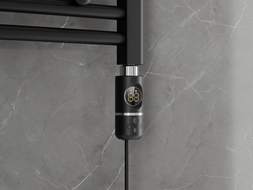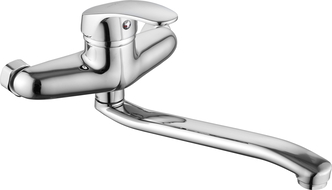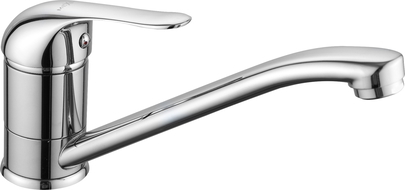
A leaking faucet causes many problems. It leads to increased water consumption, which is significantly wasted. This raises the costs of its usage. Additionally, water leaks cause limescale buildup on the fixtures and create unsightly stains. Therefore, it is worth repairing a leaking faucet as soon as possible after noticing an old seal and water dripping from it. To avoid having to replace the movable spout, which can be more expensive than just repairing the faucet, it is advisable to consider replacing the seal.
Sealing the Faucet Spout
The faucet spout is the part of the faucet from which water is directly dispensed. A leaking faucet makes it uncomfortable to use, as continuously dripping water can also lead to the spout being damaged. To repair a leaking faucet, it's important to look at the seal that holds the spout. Is it really tight enough? If there are wear marks on it, it looks too worn out, is stiff, or breaks under pressure, be sure to replace the seal before the situation leads to having to replace the faucet head.
Replacing the seal is relatively simple. You just need to separate the faucet body from the spout and you can proceed with the seal replacement. To do this, remove the old seal that is attached to the faucet body, clean the area where it was located from various contaminants: wipe it clean, degrease it with a chemical or a home method - vinegar, and then install a new seal. Next, reattach the spout and check if you have managed to fix the leaking faucet. Quality products, when properly installed, should be tight and not cause further issues.
New Faucet Spout - How to Repair a Leaking Faucet?
There may come a situation when, despite the good condition of the seal between the faucet body and the spout, the faucet still needs to be repaired. This can be an issue on the spout's side. In this case, the entire spout needs to be replaced with a new one. To do this, first, turn off the water supply using the mushroom valve. Only then can you proceed with the work. Check the tightness of the spout's attachment. If new seals are installed and the leaking faucet issue still persists, it's advisable to replace the spout or even the entire faucet. Tightening the packing nut may also prove helpful.
To replace the spout, check which brand of faucet you have and then purchase the appropriate part. You just need to have a screwdriver for unscrewing the spout. The same one you used to replace the seal. After removing the old spout, clean the device thoroughly to ensure no unwanted remnants remain. Then install the new spout. At this point, it is also worth replacing the seals with new ones that will fit their shape to the new spout. After that, just tighten the fastening screw, and the spout is replaced, and the faucet is repaired.
To repair a leaking faucet, the seal that likely no longer fulfills its purpose and does not hold water inside the device as it should needs to be replaced. This is the first step taken during the repair. If such a faucet repair did not bring the expected results and water still drips from the faucet, it may turn out that it is necessary to replace the spout or the entire faucet, which may be faulty. Such a problem usually arises only after several years of using the faucet if it is made of good quality materials.
If none of the above-mentioned methods for a leaking faucet work, it is worth contacting a plumbing specialist who will check the condition of all the faucet's components and use the appropriate tools for its repair. Then you can be sure that all elements are properly installed and will not leak if they do not have manufacturing defects.























